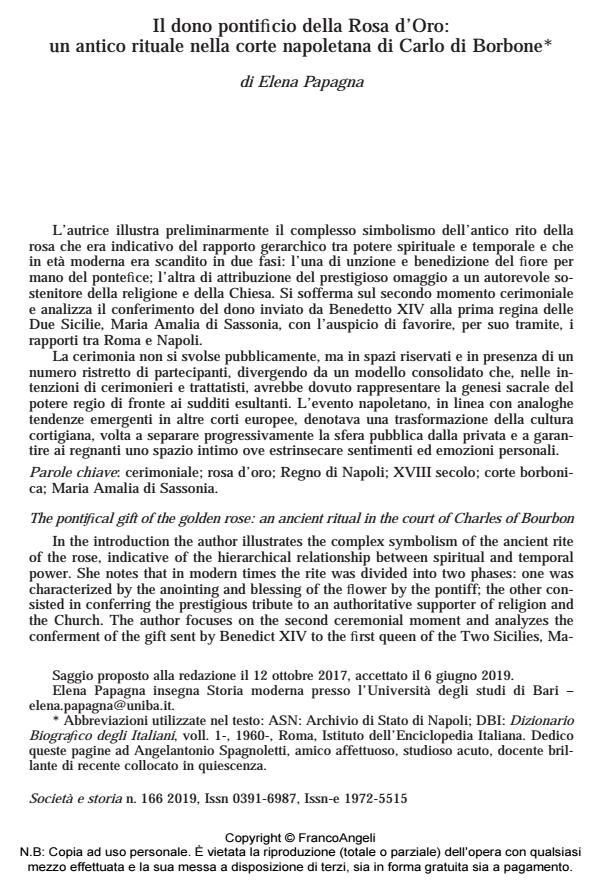The pontifical gift of the golden rose: an ancient ritual in the court of Charles of Bourbon
Journal title SOCIETÀ E STORIA
Author/s Elena Papagna
Publishing Year 2020 Issue 2019/166
Language Italian Pages 31 P. 735-765 File size 114 KB
DOI 10.3280/SS2019-166003
DOI is like a bar code for intellectual property: to have more infomation
click here
Below, you can see the article first page
If you want to buy this article in PDF format, you can do it, following the instructions to buy download credits

FrancoAngeli is member of Publishers International Linking Association, Inc (PILA), a not-for-profit association which run the CrossRef service enabling links to and from online scholarly content.
In the introduction the author illustrates the complex symbolism of the ancient rite of the rose, indicative of the hierarchical relationship between spiritual and temporal power. She notes that in modern times the rite was divided into two phases: one was characterized by the anointing and blessing of the flower by the pontiff; the other consisted in conferring the prestigious tribute to an authoritative supporter of religion and the Church. The author focuses on the second ceremonial moment and analyzes the conferment of the gift sent by Benedict XIV to the first queen of the Two Sicilies, Ma ria Amalia of Saxony, with the hope of favoring, through her, the relations between Rome and Naples. The ceremony did not take place publicly, but in reserved spaces and in the presence of a few participants. Therefore, it diverged from a consolidated model intended to represent the sacred genesis of the royal power in front of the exultant subjects. The Neapolitan event denoted a transformation of courtly culture that was emerging in other European courts and that aimed to progressively separate the public sphere from the private and to guarantee to the rulers an intimate space where to express personal feelings and emotions.
Keywords: Ceremonial; Golden Rose; Kingdom of Naples; 18th century; Bourbon Court; Maria Amalia of Saxony
- Quale storia della società? Uno sguardo sull'epoca moderna Paola Bianchi, in SOCIETÀ E STORIA 178/2023 pp.711
DOI: 10.3280/SS2022-178005
Elena Papagna, Il dono pontificio della Rosa d’Oro: un antico rituale nella corte napoletana di Carlo di Borbone in "SOCIETÀ E STORIA " 166/2019, pp 735-765, DOI: 10.3280/SS2019-166003